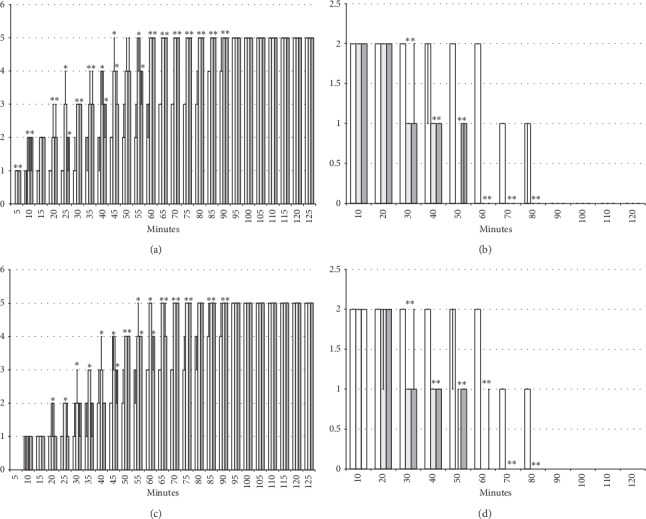Figure 3.

Axillary block: left brachial plexus perineural anesthesia produced considerable and long-lasting function failure of the affected fore limb and an inability to walk and to grasp (left) along with considerable fore limb oedema in the anesthetized rats (right) (white bars) which BPC 157 opposed (gray bars). Prophylactic effect: BPC 157 medication (gray bars) (10 μg/kg (light gray bars), 10 ng/kg (dark gray bars) intraperitoneally) given immediately after lidocaine (upper) considerably counteracted lidocaine-induced course. Therapy effect: BPC 157 medication (gray bars) (10 μg/kg (light gray bars), 10 ng/kg (dark gray bars) intraperitoneally) given later (after 10 minutes) (lower) considerably counteracted lidocaine-induced course. (a), (b) Perineural anesthesia of the nerves of the left brachial plexus, scored 0–5, min/med/max. (c), (d) Fore limb oedema with perineural anesthesia of the nerves of the left brachial plexus, scored 0–3; values are presented as min/med/max. ∗P < 0.05 at least vs. control.
